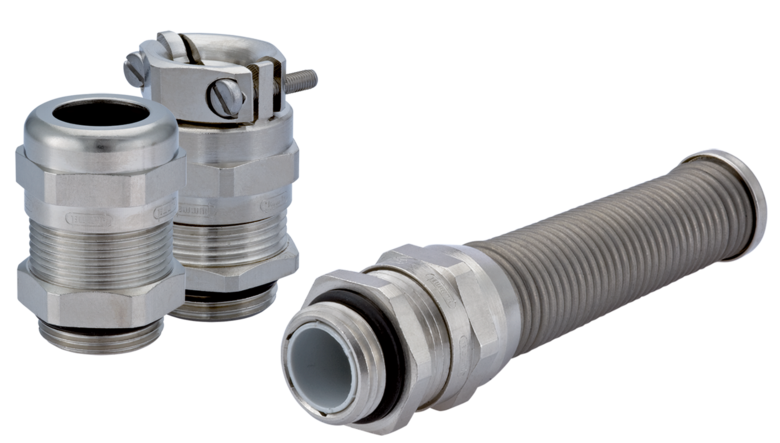
Les presse-étoupes EMC protègent les équipements électriques contre les interférences électromagnétiques. Ils remplissent une fonction clé dans la protection EMC aux transitions critiques vers les enceintes. Le presse-étoupe dévie les ondes électromagnétiques sur la surface du boîtier selon le principe de la cage de Faraday et protège ainsi les câbles exposés à l'intérieur du boîtier.
Les presse-étoupes HUMMEL avec protection EMC sont disponibles en trois versions différentes :
Cette variante haut de gamme possède un corps de serrage métallisé, qui assure un contact continu avec le blindage tressé du câble, même dans les applications dynamiques. Ce presse-étoupe est certifié conforme aux normes UL, cUL et NEMA, une exigence importante pour une utilisation internationale.
au produit HSK-M-EMC-D
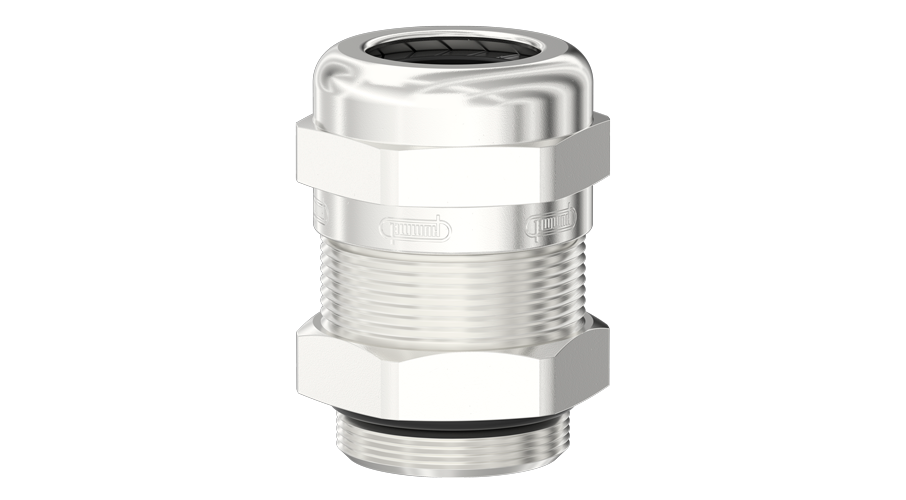
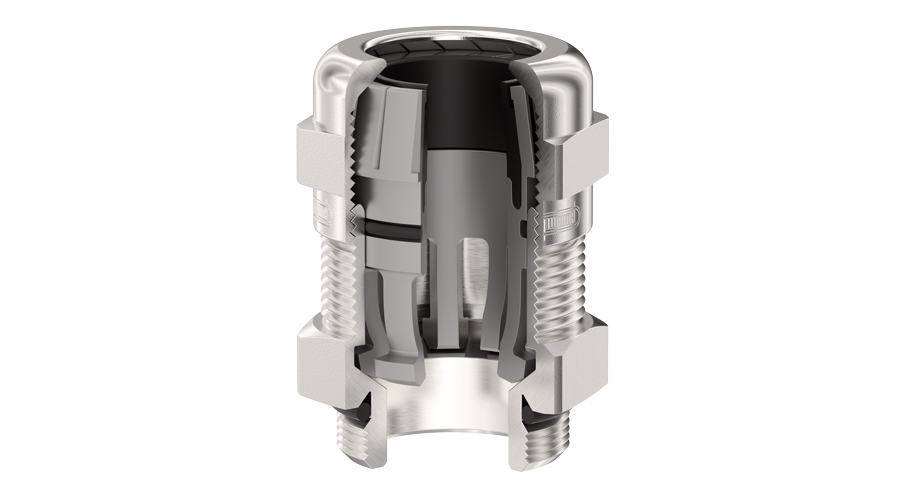
Ce presse-étoupe utilise également le principe du corps de serrage. Cela garantit un temps d'installation nettement plus court qu'avec les presse-étoupes EMC classiques. Il n'est pas nécessaire de séparer le blindage du câble. Le câble est simplement dénudé dans la zone concernée, le passe-câble est positionné et fixé.
au produit Metrica-M-EMC-E
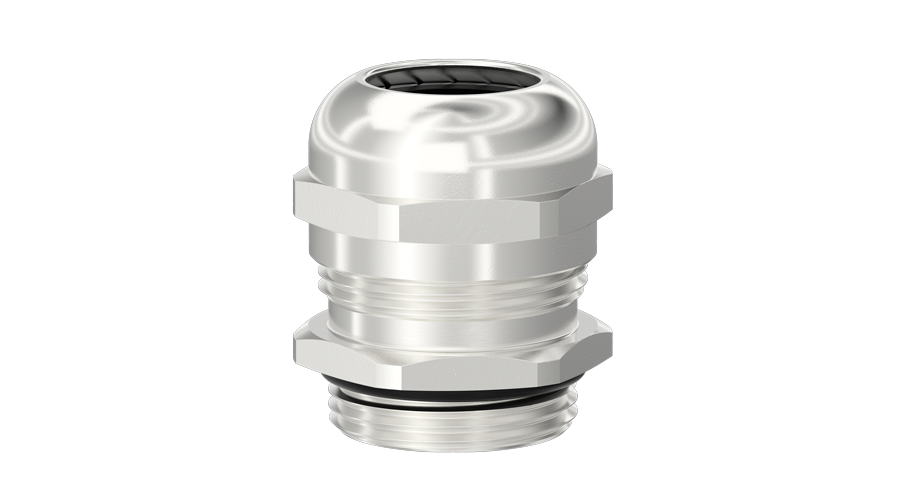
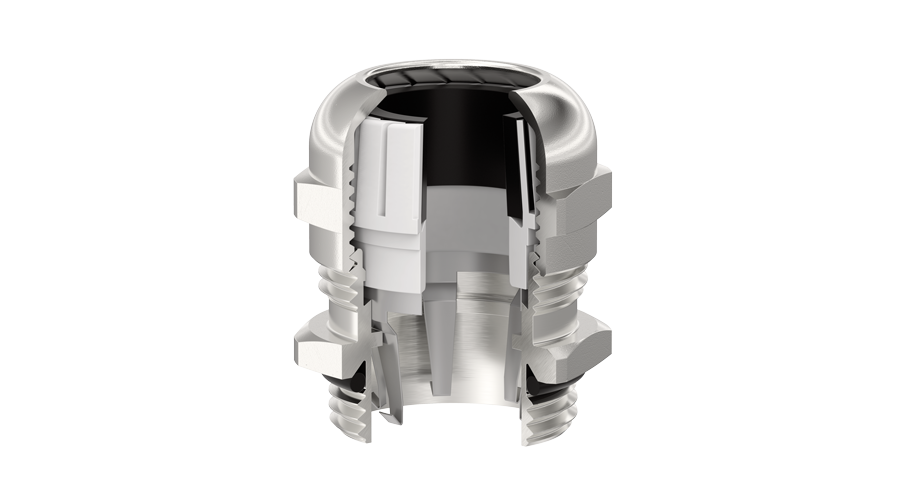
Ce presse-étoupe offre également une protection fiable contre les influences électromagnétiques. Il suit le principe de montage classique, dans lequel l'écran est séparé et relié au presse-étoupe. Le HSK-M-EMC convient aux solutions dans les applications non dynamiques où le temps de montage n'est pas un facteur majeur.
au produit HSK-M-EMC
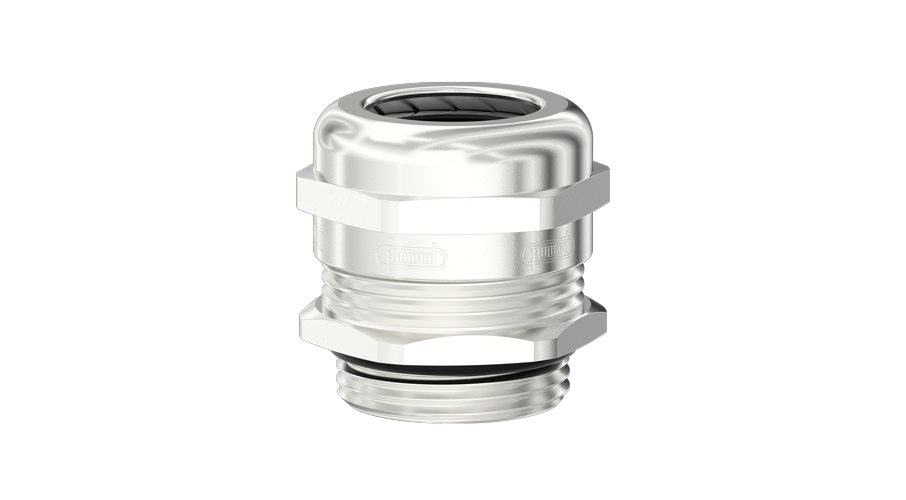
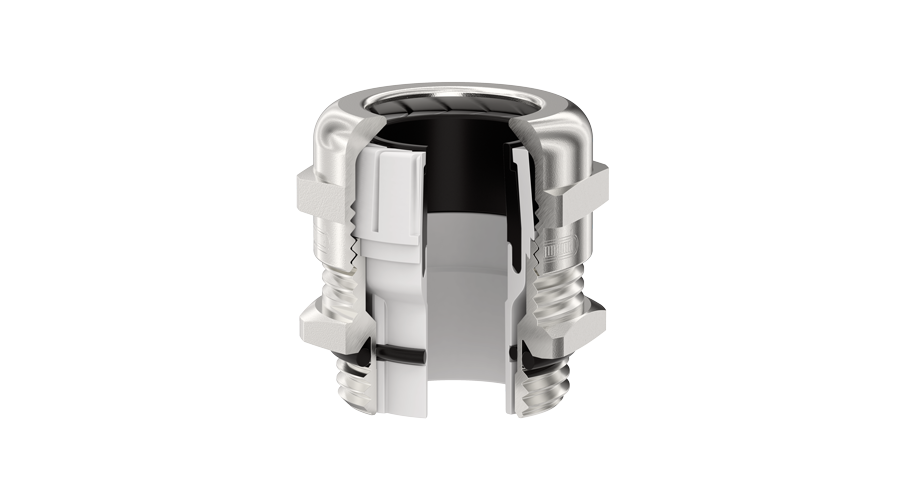
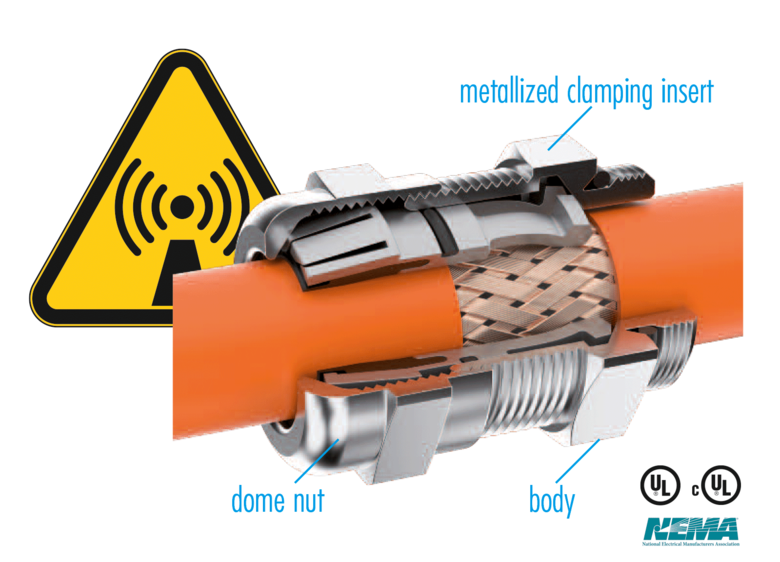
The metallized clamping insert ensures a secure 360⁰ contact to the shielding braid and thus permanent EMC protection even in dynamic applications.
Electromagnetic interference can cause lasting disruption to the functioning of electrical equipment. Shielded cables protect the signal lines from these interference influences - but only until they are inserted into a housing or control cabinet. At these critical transitions, it is the task of the cable gland to protect the exposed lines inside the housing from electromagnetic waves. It dissipates these waves via the surface of the housing, thereby using the principle of the Faraday cage to protect the cabling and the components inside.
Component manufacturers use a wide range of techniques for EMC protection. However, a clamping element integrated in the cable gland has proven its worth, which ensures a complete contact of the shielding braid. The cable gland HSK-M-EMC-D EMC from HUMMEL AG also follows this principle. When the union nut is tightened, the metallized clamping body is fixed to the shielding all round. The advantage: this design also withstands dynamic applications. There can be no gaps in the connection due to assembly errors or material fatigue. The 3600 protection is permanently guaranteed.
In addition, the assembly time for the premium screw connection HSK-M-EMC-D is significantly shorter. With conventional systems, the shielding has to be laboriously separated, precisely fitted and fixed. With the clamping insert principle, it is not even necessary to separate the shielding. The cable is stripped in the relevant area, the cable gland with the integrated clamping element is positioned and tightened.
The HSK-M-EMC-D is certified according to UL, cUL and NEMA. This is important for all machine and plant manufacturers serving the North American market. UL certification is virtually obligatory there, because without UL there is no insurance cover. Plant manufacturers have clear advantages if they can present certificates for all their components and assemblies. This saves time and costs on site when commissioning the machines. The NEMA protection classes are only partially comparable with the European concept of IP protection classes. NEMA distinguishes between indoor and outdoor applications. That is why machine builders have to look very carefully. An indoor certificate for a component is of little use if the system will later be outdoors.
The EMC cable glands from HUMMEL AG are available in metric, NPT and PG thread types. Ex-versions for potentially explosive atmospheres are also available. The cable glands fulfil protection class IP68 / IP 69K.